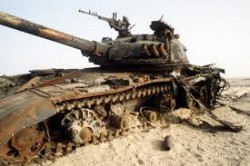This article was first posted to the USNI blog.
The demands of the warfighter are like cheese processed through the lactose intolerant digestive tract that is military supply; though digestion is a vital process, it can be unspeakably painful and smell of rotten eggs. End-users already plagued by rapidly decreasing manning and time are now interrupted by long backorder lead times, artificial constraints on off-the-shelf solutions, and funding. Personnel are known to skip the supply system altogether, purchasing parts or equipment out of pocket when an inspection is on the line. This both hides the problem and takes from the pockets our sailors. The military has forgotten that supply exists for the utility the operator, not the ease of the audited. For the military supply system to regain the trust and capabilities necessary to serve the end-user, reforms to the way supplies are selected, commercial purchases are managed, and funding requested are necessary.
COSAL:
The first major problem is the Coordinated Shipboard Allowance List (COSAL). COSAL is a process by which the navy’s supply system determines what supplies it should stock on the shelves; items are ordered through the in-house supply system and the hits in the system raise the priority to stock. Unfortunately, COSAL is reactive rather than predictive and cannot meet the needs of either the new aches of an aging fleet or the growing pains of new ships. As ships grow long-in-the-tooth, parts and equipment once reliable require replacement or repair. New ships find casualties in systems meant to last several years. Equipment lists also change, leading to fleet-wide demands for devices only in limited, if any, supply. The non-COSAL items are suddenly in great demand but nowhere to be found. Critical casualties have month+ long wait-times for repairs as parts are back-ordered from little COSAL support. Commands attempt to fill their time-sensitive need by open purchasing these items from the external market, which are not COSAL tracked. This leads to either supply forcing the workcenter to order through supply and end-users waiting potentially months for critical backordered items, or the open purchase being accomplished and COSAL staying unchanged. Although difficult, the supply system should be more flexible to open-purchasing stock item equivalents due to time constraints while integrating open purchase equivalence tracking into the COSAL process. This bypasses the faults of COSAL’s reactionary nature while still updating the supply system with the changing demands.
Split Purchasing:
The limitations on open purchasing (buying commercial off-the-shelf) create artificial shortages of material easily available on the street. Namely, when items are not under General Services Administration (GSA) contract, single vendor purchases or purchases for a single purpose cannot exceed $3,000, no matter how the critical need or short the deadline. This further exacerbates the problems from an unsupportive COSAL; if requirements exceed purchase limitations, requests are sent through a lengthy contracting process which wastes more time than money saved. The contracting requirement ignores the fact that from the work-center supervisor to the supply officer, everyone now has the ability to search the internet for companies and can compare quotes. Purchasers need not be encouraged to spend less money, since they have the natural deisre to stretch their budget as far as possible. Contracting opportunities also become more scarce as the end of the fiscal year approaches, since money “dedicated” to a contracting purchase is lost if the clock turns over and no resolution is found. This means money lost to the command and vital equipment left unpurchased. For deployed/deployable units, this can be unacceptable. The supply system exists to fulfill the operational needs of the training/deployed demand-side, not to streamline the risk-averse audit demands of the supply side. If not raising the price-ceilings of non-GSA purchases for operational commands, the rule against split purchasing by spreading single-type purchases across multiple vendors should be removed. Breaking out a single purchase amongst several vendors alleviates the risk that large purchases are being made to single vendors due to kick-backs. This would call for more diligence on the part of Supply Officers, but that is why they exist.
Funding:
Finally, the recent Presidential Debates have shown the military’s poor ability to communicate the message that funding is becoming an increasingly critical issue force-wide. To many, the defense budget is so large that cuts are academic, savings no doubt hiding throughout the labyrinthine bureaucracy. However, for those of us who had no money to buy everything from tools to toilet paper for a month, it’s a more practical problem. Long before sequestration, Secretary Gates started the DoD on the path of making pre-emptive cuts before outside entities made those choices for the DoD. However, the military has made a poor show of communicating that these cuts have become excessive and are now cutting into the muscle of the force. Obeying the directive to cut funding does not require quietly accepting these cuts; now the Commander and Chief believes the military not even in need of a cut freeze, let alone a funding increase. With Hydra of manning, material, and training issues constantly growing new heads, the strategic communicators must come out in force to correct this misconception. While administrative savings can be found, our capabilities are paying the price for the budgetary experiment. Military leadership should, in part, involve advocacy; obedience requires the resources to execute the mission.
The supply system is a painful process, but with rather humble reforms, that pain can be both lessened and taken off the shoulders of whom the system exists to serve. With a reformed COSAL tracking open purchases, a loosened open-purchase limit that puts the stress on the supplier rather than operator, and better strategic communications about funding, we can apply a bit of lactaid to an otherwise painful process.
Matt Hipple is a surface warfare officer in the U.S. Navy. The opinions and views expressed in this post are his alone and are presented in his personal capacity. They do not necessarily represent the views of U.S. Department of Defense or the U.S. Navy.



